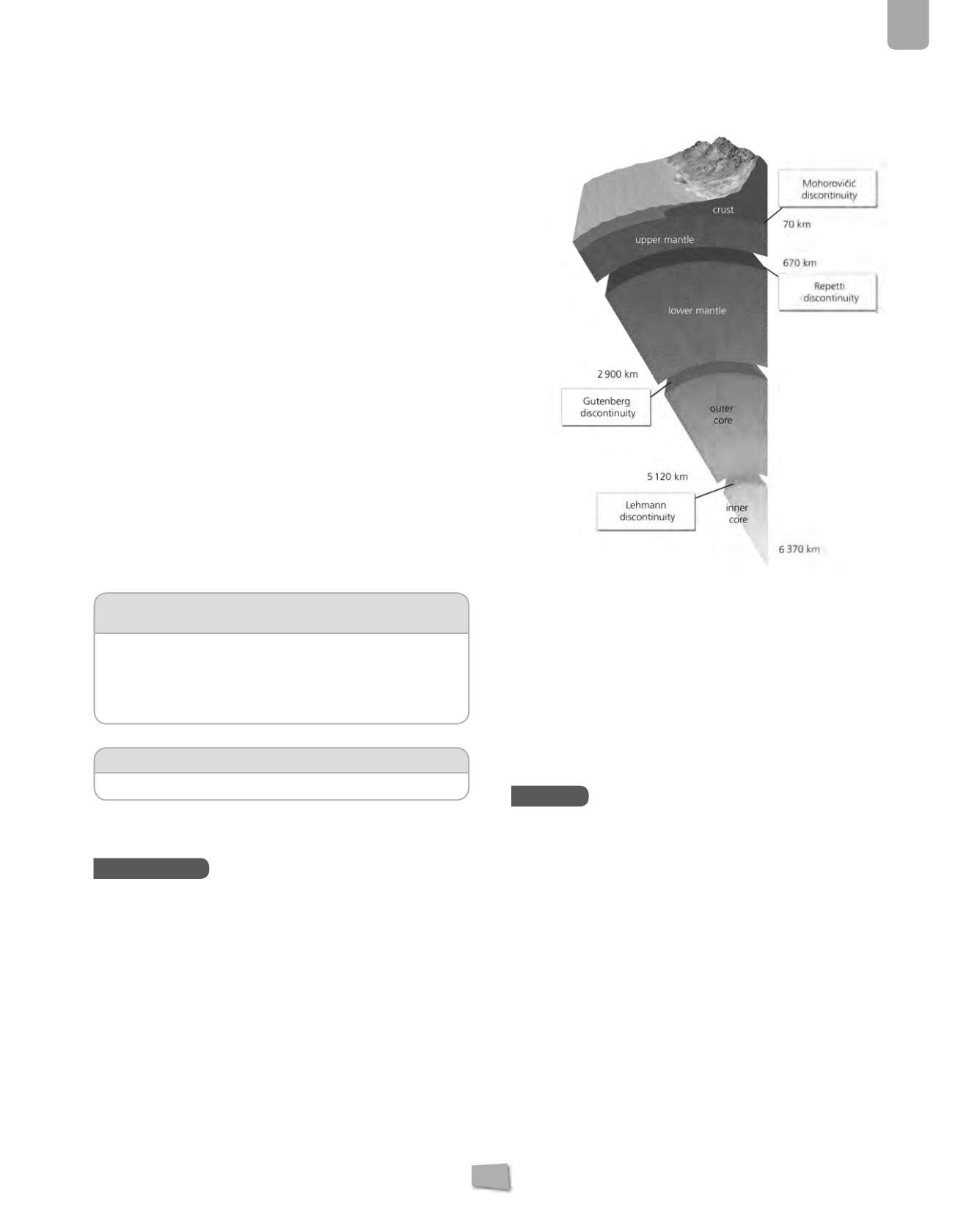
107
3
The Geosphere
The seismographs detect the variations of the seismic wave’s
velocity that are related to the discontinuities. These discontinuities
are named according to the person who discovered them. Only
the outer core is liquid, although by analysing how the seismic
waves move, we can deduce that in the mantle there are materials
partially molten that reduce the velocity of the waves. In the chart
we only see the main materials but students must know that
there are other materials, especially in the crust. They will study
those in this unit
The layers of the geosphere are divided according to their
composition. There is another division according to their conduct
or dynamism. It says that the geosphere is divided into: lithosphere
(the crust and part of the upper mantle), sub-lithospheric mantle
(rest of the upper mantle), lower mantle, outer core and inner core.
When explaining the mantle, highlight that the materials partially
molten and the high temperatures generate movements called
convection currents. Those movements move the lithospheric
plates.
The core generates a magnetic field that allows us to find
directions using a compass and also protects us from harmful
solar radiations.
Finish the section by asking them to do questions 1 to 3 and then
review the
Key concepts
at the end of the section.
Tips:
Question 1 should be done with the whole class. Before
question 2 give the students time to look at the diagram first, then
play the audio twice. Ask students to do question 3 individually
and then ask them to compare their answers. Correct with the
whole class.
Reading comprehension:
THE CORE OF THE EARTH
ROTATES MUCH SLOWER THAN YOU THINK
This text is to emphasise the impact that the core movements
have on the rest of the planet. The core is not a static or cons-
tant layer; it moves and grows slowly but continuously. The core
movements are very important for the planet, for example, in the
creation of a magnetic field.
Curricular adaptation:
1. LAYERS OF THE GEOSPHERE
Section adapted according to the curriculum.
Answer key
Understand
1.
Explain in your own words the meaning of accretion
of planetesimals.
Process which formed the planets. Billions of years ago the
Sun formed from chemical reactions in a giant cloud of dust
and gas (nebula) and in the cloud of matter that surrounded
the Sun, smaller dust particles collided and grew in size.
2.
Listen and find the parts of the geosphere on the
diagram.
a) The crust.
b) The oceanic crust.
c) The upper and lower mantle.
d) The core.
Audio script:
a) This is the least dense layer.
b) This is 200 million years old.
c) The mantle has two parts, what are they?
d) This is the densest layer of the geosphere.
Create
3.
Find out about the density of the layers of the
geosphere. Make a table with the information in the
order of least dense to densest materials.
The continental crust has an average density of 2.7 g/cm
3
,
while the oceanic crust has a higher density, with an average
of 3.0 g/cm
3
. Consequently, the layers of the geosphere from
the least to the more dense are:
Continental crust (2.7 g/cm
3
) - Oceanic crust (3.0 g/cm
3
)
- Upper mantle (3.5 g/cm
3
) - Lower mantle (5.6 g/cm
3
) - Outer
core (9.9 g/cm
3
) - Inner core (13.0 g/cm
3
).


